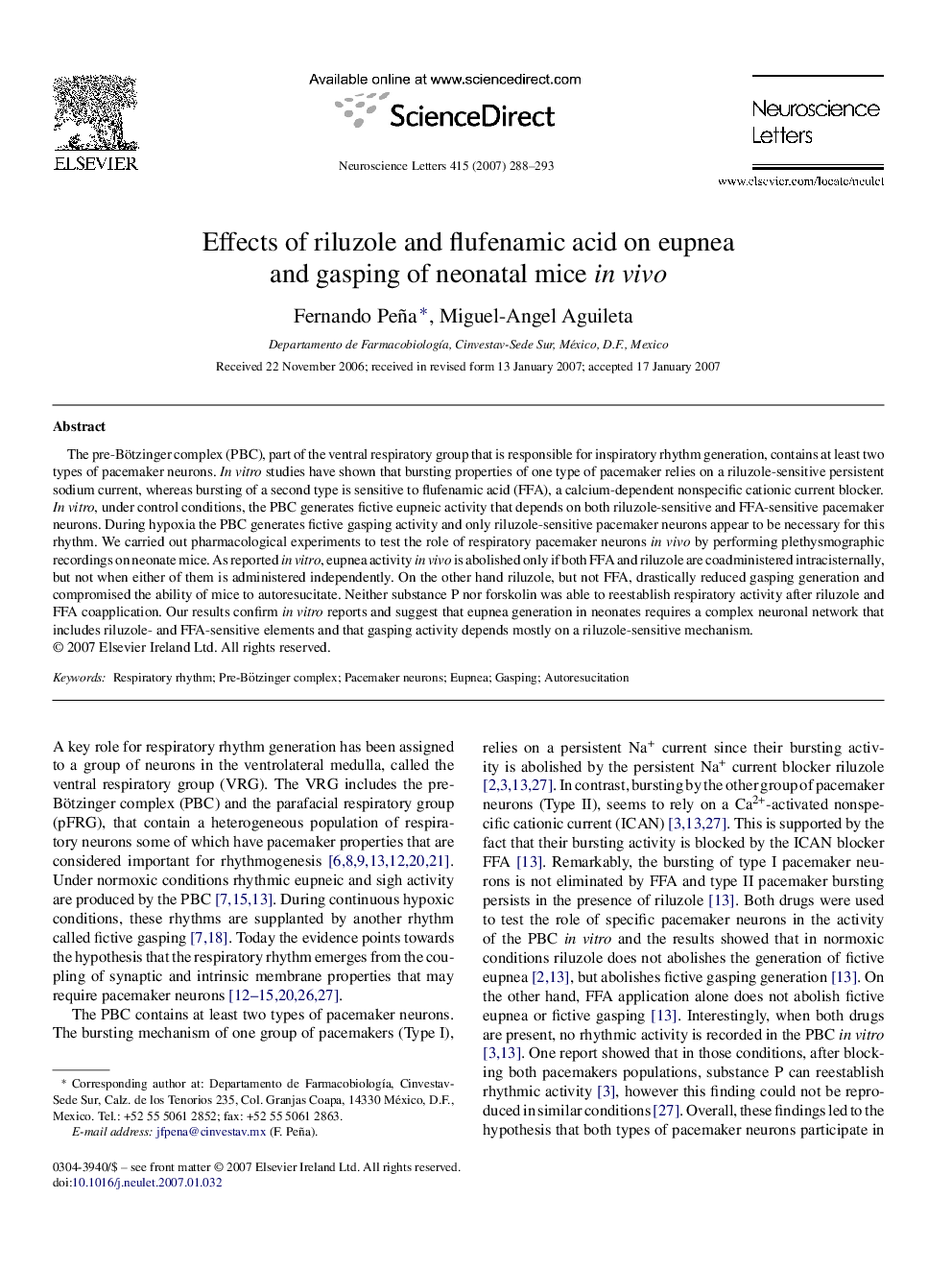| Article ID | Journal | Published Year | Pages | File Type |
|---|---|---|---|---|
| 4349829 | Neuroscience Letters | 2007 | 6 Pages |
Abstract
The pre-Bötzinger complex (PBC), part of the ventral respiratory group that is responsible for inspiratory rhythm generation, contains at least two types of pacemaker neurons. In vitro studies have shown that bursting properties of one type of pacemaker relies on a riluzole-sensitive persistent sodium current, whereas bursting of a second type is sensitive to flufenamic acid (FFA), a calcium-dependent nonspecific cationic current blocker. In vitro, under control conditions, the PBC generates fictive eupneic activity that depends on both riluzole-sensitive and FFA-sensitive pacemaker neurons. During hypoxia the PBC generates fictive gasping activity and only riluzole-sensitive pacemaker neurons appear to be necessary for this rhythm. We carried out pharmacological experiments to test the role of respiratory pacemaker neurons in vivo by performing plethysmographic recordings on neonate mice. As reported in vitro, eupnea activity in vivo is abolished only if both FFA and riluzole are coadministered intracisternally, but not when either of them is administered independently. On the other hand riluzole, but not FFA, drastically reduced gasping generation and compromised the ability of mice to autoresucitate. Neither substance P nor forskolin was able to reestablish respiratory activity after riluzole and FFA coapplication. Our results confirm in vitro reports and suggest that eupnea generation in neonates requires a complex neuronal network that includes riluzole- and FFA-sensitive elements and that gasping activity depends mostly on a riluzole-sensitive mechanism.
Related Topics
Life Sciences
Neuroscience
Neuroscience (General)
Authors
Fernando Peña, Miguel-Angel Aguileta,
